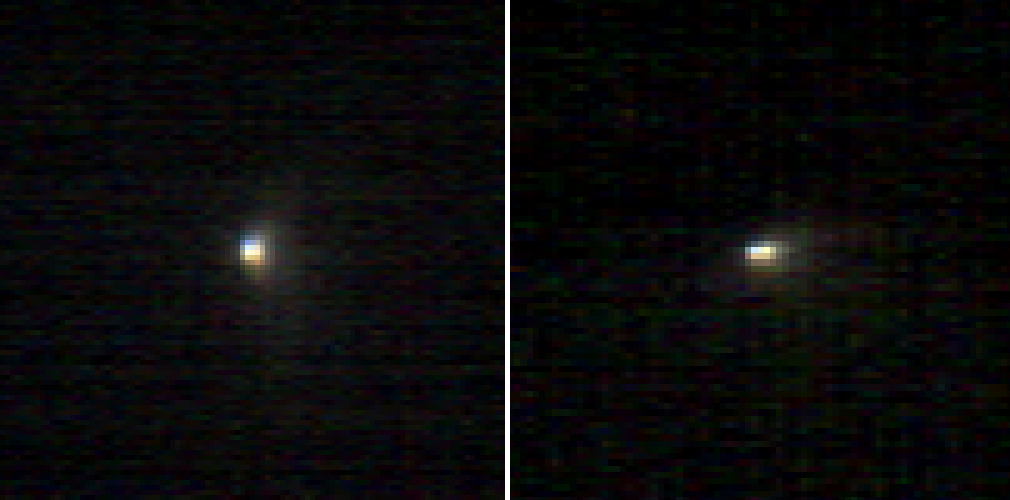Press Release
Image From Mars-Orbiting Spectrometer Shows Comet’s Coma
Fri, 10/24/2014 - 12:02
These two infrared images of C/2013 (Comet Siding Spring) were taken by the Compact Reconnaissance Imaging Spectrometer for Mars (CRISM) aboard NASA’s Mars Reconnaissance Orbiter (MRO) on Oct. 19, 2014. Comet Siding Spring — an Oort Cloud comet that may contain material from the formation of the solar system some 4.6 billion years ago — was making its first voyage through the inner solar system. CRISM and many other instruments and spacecraft combined to provide an unprecedented data set for an Oort Cloud comet.
CRISM acquired the first image at 2:16 p.m. EDT on Oct. 19, just prior to the comet’s closest approach to Mars at 2:27 p.m. EDT, when it came within roughly 88,000 miles of the planet. The second image was taken 37 minutes later, during which the comet — traveling at approximately 34 miles per second — had traversed one-third of the way across the Martian sky. The scale of the left image is approximately 4 kilometers per pixel; for the right image, it is about 5 kilometers per pixel. The images, which have had brightness and color enhancements, provide very different perspectives on this intriguing comet.
The images show the inner part of the cloud of dust, called the coma, that is generated around the nucleus by the warmth of the sun. The solid nucleus itself is not resolved. CRISM observed 107 different wavelengths of light in each pixel. Here, only three colors are shown. Researchers think the appearance of color variations in the inner coma could be due to the properties of the comet’s dust, possibly dust grain size or composition. The full spectra will be analyzed to better understand the reason for the color variations.
CRISM is one of six instruments on NASA’s Mars Reconnaissance Orbiter. The Johns Hopkins University Applied Physics Laboratory in Laurel, Maryland, provided and operates CRISM; Lockheed Martin Space Systems in Denver built the orbiter. NASA’s Jet Propulsion Laboratory in Pasadena, California, manages MRO for NASA’s Science Mission Directorate, Washington, D.C. For more information about NASA Mars missions, visit www.nasa.gov/mars.
